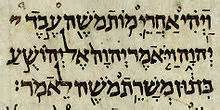"Great Joy" -- Ezra 6:13-22
 Tuesday, September 27, 2016 at 10:16AM
Tuesday, September 27, 2016 at 10:16AM  The Sixth in a Series of Sermons on Ezra-Nehemiah
The Sixth in a Series of Sermons on Ezra-Nehemiah
When the Babylonians sacked Jerusalem in 587 BC and destroyed both the city and the temple, everything changed for Israel. The surviving inhabitants were forced to endure a humiliating captivity in Babylon. While in captivity, they found themselves under the domination of the Persian empire which defeated the Babylonians. Cast from their land because of their disobedience to their covenant with YHWH, those Jews who returned to Jerusalem in 538 to rebuild their temple find themselves facing a new reality. The land which they once ruled, is now part of the Persian empire, with a well-established system of Satraps and local governors in place. Although the Persian king, Cyrus, had decreed to free the Jews from their captivity and return them to Jerusalem to rebuild both the city and temple, the Jews were no longer free to self-govern–they are accountable to their Persian landlords. To add insult to injury, the returning exiles must live adjacent to the so-called “people of the land”–a mixture of Canaanites, apostate Jews, and transplanted Assyrians. Israel’s neighbors will do everything in their power to disrupt whatever progress the Jews make in rebuilding their city and their temple. Through his prophets, God promised his people that they would return to their land, rebuild Jerusalem, and their temple. If God is to keep his covenant promise to his people and restore his temple, he must do so through a small remnant of Jewish exiles now returned home, and by demonstrating his sovereign power over the Persian king (and his successors), and this despite sustained opposition from the people of the land. Everything changed for Israel in 587 BC.
As we continue our series on the books of Ezra and Nehemiah we come to Ezra 6, the first half of which recounts the official response from the Persian king Darius (Cyrus’ successor) to a letter sent to the Persian royal court by the local governor, Tattenai, requesting a search of the state archives to see if the Jews were telling the truth–that they had returned to the land upon the decree of Cyrus, who also decreed to fund the rebuilding of both the city and the temple. The second half of Ezra 6 (vv. 13–22) describes how work on the temple–which came to a halt in 520–got underway again, with the second temple finally completed in 516 BC, during the sixth year of the reign of Darius.
The completion of the rebuilt temple marks a major turning point not only in the Book of Ezra, but also in the history of Israel. Throughout the first six chapters of this book, Ezra is recounting events which occur nearly sixty years before his own return to Jerusalem in 458 BC to help ensure that now that the temple has been rebuilt, Ezra’s people, the Jews, continue the purposes for which God has called them–to be his covenant people and a light to the Gentiles–and that the Israelites living after the exile not repeat the sins of their forefathers which led to them being cast from the land of promise (Canaan) in the first place. A rebuilt temple not only ties the Jews to Israel’s previous history, the construction of a so-called “second temple,” opens a new future to the Jewish people. Ezra and Nehemiah will play a role in this.
For us, as readers and students of this book, the rebuilding of the temple brings to an end the first twenty-one years of Israel’s history after the people are back in the land (after returning from Babylon). This chapter also brings to a close the Ezra’s account of those years when Zerubbabel and Jeshua (Joshua) led the people in rebuilding, preparing us for the accounts of Ezra (from chapter 7 to the end) and the Book of Nehemiah. To quote one writer, Erza chapter 7 and the Book of Nehemiah are “a lifetime away” from the events of Ezra chapters 1-6. As just mentioned, Ezra arrives upon the scene in 458, some sixty years and nearly two generations after the events took place which he has been recounting associated with the exiles returning home and rebuilding their temple.
To read the rest of this sermon, Click Here


Reader Comments